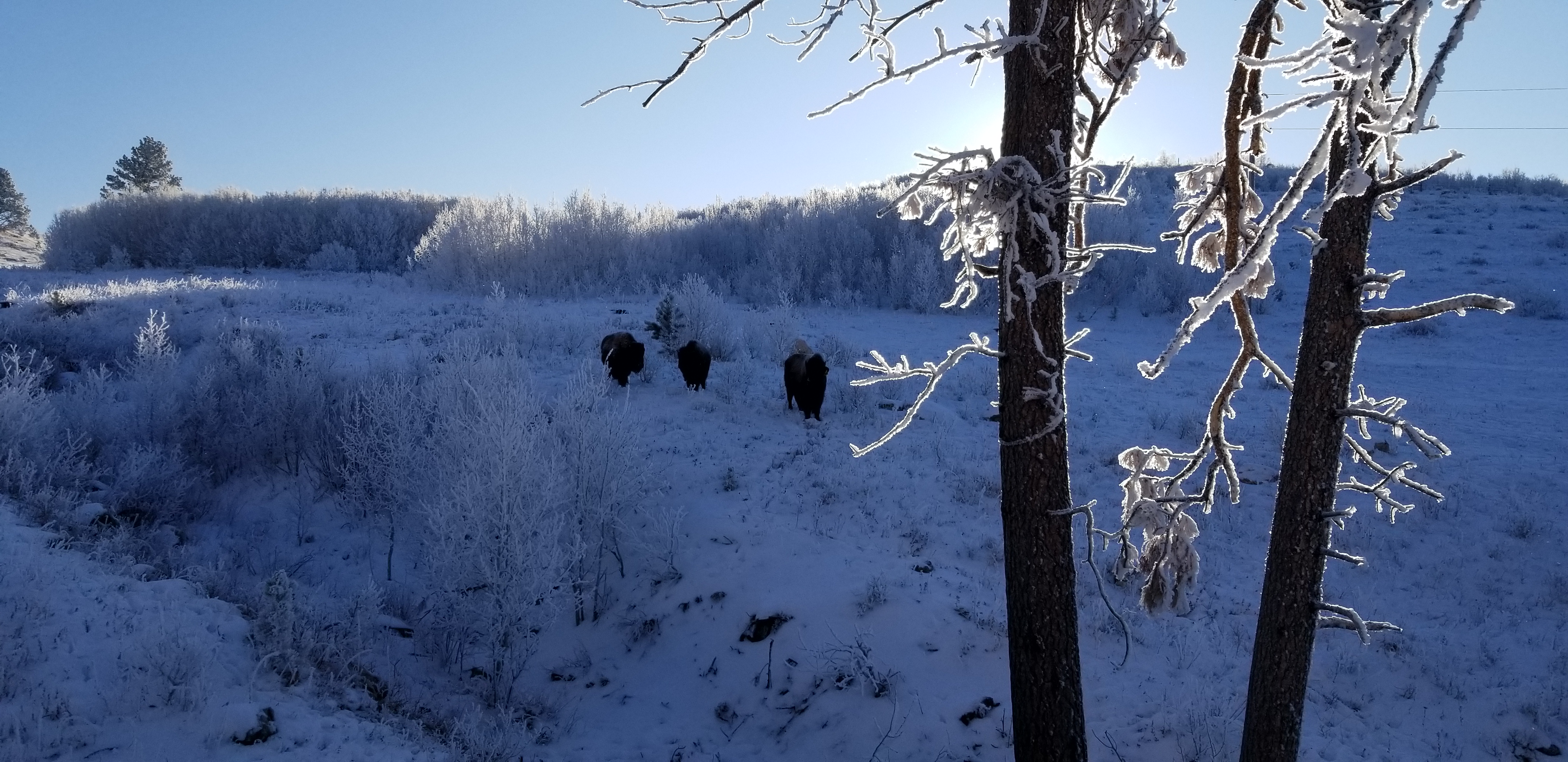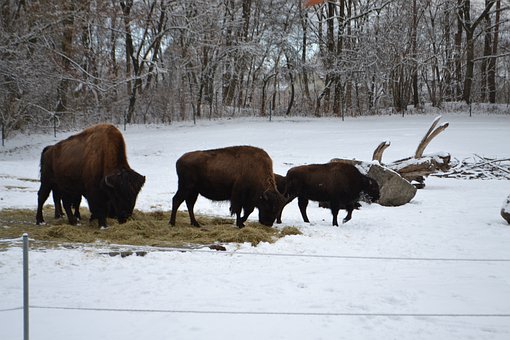The Bison Project Winter 2022 Report
Our small herd of bison is doing well this winter. In response to the falling temperatures, bison grows a winter coat of woolly underfur with coarse guard hairs that protect them from the elements. It’s critical for surviving extremely low temperatures in areas swept by strong winds.

This year, the Black Hills of South Dakota temperatures have been relatively mild. Our bison can often be seen lounging in the warm sun and even at times finding shade in the pine and aspen trees. They usually go for walks in the wooded area of our property, grazing on what they can along the way.

Before private land ownership and fencing divided the land and prevented free movement, bison herds would travel vast distances grazing all the while. Historically, bison did not migrate far south as the weather turned cold in the winter, but they traveled to lower elevations where snow was not so deep.

Cold doesn’t seem to bother bison even when temperatures plummet well below zero, bitter winds whip across the landscape, and bison remain. As long as the snow isn’t too deep, bison can use their heads like a plow to push aside the accumulation and reach the forage below.
Now due to modern fencing and travel restrictions, bison must be cared for during the winter months. Therefore, we provide hay bales of grasses harvested in the previous summer. We also offer “cattle cubes” to supplement their protein requirements and give them a nice treat. Clean, accessible water is also supplied and maintained warm enough to prevent freezing. Micronutrients are accessible via mineral blocks which the bison lick as needed.

Without human management and intervention, living with current land ownership regulations would be impossible for bison in all but the most extensive ranges, including thousands of acres. Even many of the largest bison herds require human management and support. Winter can be very hard on bison. The cold and lack of food can take their toll, especially if the bison is sick, injured, young, or old. Very young bison have the highest risk of dying over the winter.

With the management practice in place, the Bison Project herd is thriving. Thanks to the many contributors to this project in supporting the return of this magnificent animal to the land. For more information about the Bison Project click here: THE BISON PROJECT

